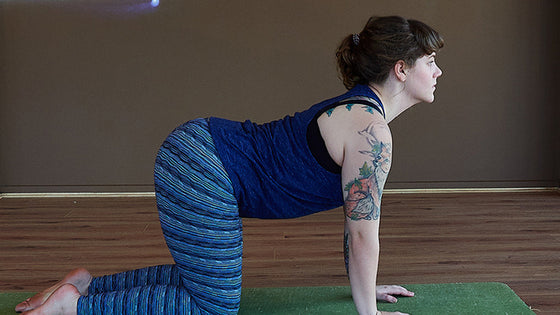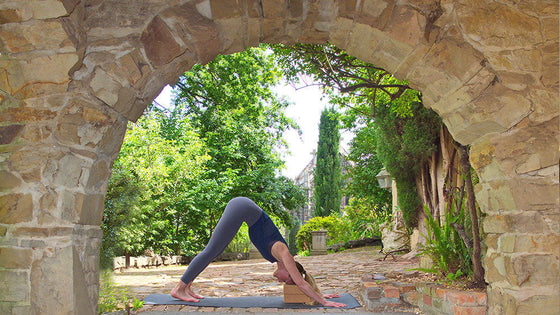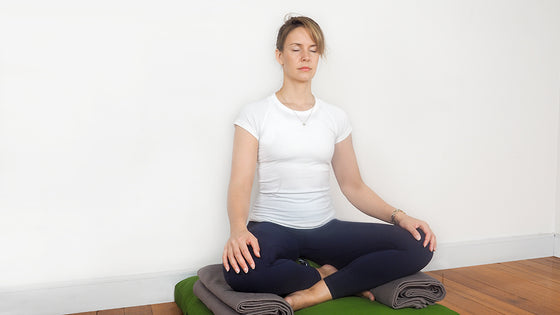- Ergonomic Products
- Ergonomic Furniture
- Yoga
- Meditation
- Pilates
- Air Treatment
- Blog
- Resources
- About Us
- Wholesale
- Ergonomic Products ▼
- Ergonomic Furniture ▼
- Yoga ▼
- Meditation ▼
- Pilates ▼
- Air Treatment ▼
- Blog
- Resources ▼
- About Us
- Wholesale
- Sign in
Have you ever experienced joint pain? (If you are wincing at this question, I’ll take it as a ‘yes’..)
Joint pain is common within the entire population, and can target any of the body’s 300+ joints. Making it’s presence felt as stiffness, pain, swelling, warmth or reddness around a joint, the most common sites of the ‘ouch’ occur in the elbows, wrists, shoulders, the base of the spine, knuckles, hips, knees or ankles.
Joints refer to the meeting point of two bones, for the task of moving body parts. Because bones are, err, boney, a healthy joint buddies up with a smooth, cushiony layer of cartilage sandwiched the bones to prevent any bumping and grinding.
In a compromised joint, however, this protective cartilage is thin or non-existent. And I’m sure you can imagine the pain of any bone-on-bone clashes - eek!
The possible causes of cartilage demise and subsequent pain are numerous. It could originate from an injury (old or new) or from using the joints and muscles in an unusual way (for example, playing a new sport or lifting heavy furniture on moving day).
Oh, and hello computer users - hours of tapping away on the computer keyboard and maneouvering a mouse is potentially a perfect storm for joint injury!
Ongoing joint pain could be a sign of arthritis - a chronic medical condition which specifically affects the joints. See your healthcare provider if your pain can’t be attributed to an incident or injury, lasts more than a few days and/or brings on swelling, redness and warmth of your joints.
When joints are sore, movement can hurt. But in most cases simple, gentle and regular movement actually promotes joint healing and mobility. And that’s where yoga comes in...
Gentle yoga is an excellent way to care for the entire joint structure. Performing low-impact yoga postures and sequences can contribute to maintaining happy, healthy joints. Benefits include:
We’ve chosen a gentle all-over-body sequence and two key poses to beautifully nurture the joints. This selection also provides an opportunity to heighten your awareness of the amazing and complex role joints play in our day-to-day movements.
Do check with your healthcare provider and yoga teacher if you have any concerns about your range of movement or comfort on the mat. Remember to have props such as blankets, blocks or bolsters nearby to use as padding under the body for comfort, as needed.
Yoga’s Pawamuktasana Series 1 is an excellent practice for freeing up the major moveable joints of the body while stimulating production of protective synovial fluid. Interestingly, the sanskrit word Pawamuktasana means to release air from the body via movement. In Ayurveda, the traditional Indian system of medicine, it’s thought that joint issues are related to the air element, Vata. This sequence aims to remove any excess air from around the joints, thereby promoting easeful movement.
Pawamuktasana Series 1 is gentle, easy and can be done from a seated position on the floor. The sequence begin by scrunching and spreading the toes and works it’s way up through the whole body, ending with simple neck movements.
Discover Pawamuktasana Series 1 by following along with this video.
While you can’t strengthen a joint itself, you can strengthen muscles that support it. Virabhadrasana II offers opportunity to develop muscles around the ankles, knees, hips, shoulders, elbows and wrists.

When combined with the breath, this gentle wave-like motion is perfect for clearing and lubricating the vertebral joints along the spinal column from the neck, all the way to the lower back. Here’s what to do:

The experience of pain coupled with not being able to do particular movements and activities can negatively impact the mind. Time spent in a quiet, still meditation or pranayama practice can help manage the emotional impact of pain on the body, mind, and spirit.
When you stop to think about it, joints really are an amazing piece of the human body. Allowing movement and providing a cushiony meeting spot between the bones, life without joints would be stagnant and boring!
Next time you get up to move, whether it’s to make a cup of tea or practice a vinyasa flow, give a little thanks to your joints. And while you’re there, make a pact to pamper them with appropriate care and movement.


